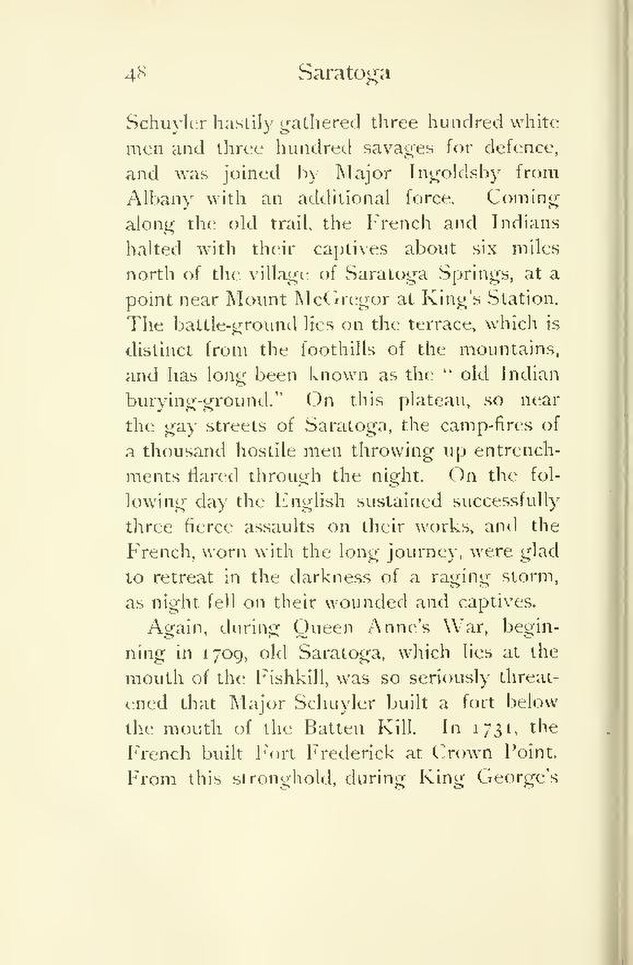Schuyler hastily gathered three hundred white men and three hundred savages for defence, and was joined by Major Ingoldsby from Albany with an additional force. Coming along the old trail, the French and Indians halted with their captives about six miles north of the village of Saratoga Springs, at a point near Mount McGregor at King's Station. The battle-ground lies on the terrace, which is distinct from the foothills of the mountains, and has long been known as the "old Indian burying-ground." On this plateau, so near the gay streets of Saratoga, the camp-fires of a thousand hostile men throwing up entrenchments flared through the night. On the following day the English sustained successfully three fierce assaults on their works, and the French, worn with the long journey, were glad to retreat in the darkness of a raging storm, as night fell on their wounded and captives.
Again, during Queen Anne's War, beginning in 1709, old Saratoga, which lies at the mouth of the Fishkill, was so seriously threatened that Major Schuyler built a fort below the mouth of the Batten Kill. In 1731, the French built Fort Frederick at Crown Point. From this stronghold, during King George's
